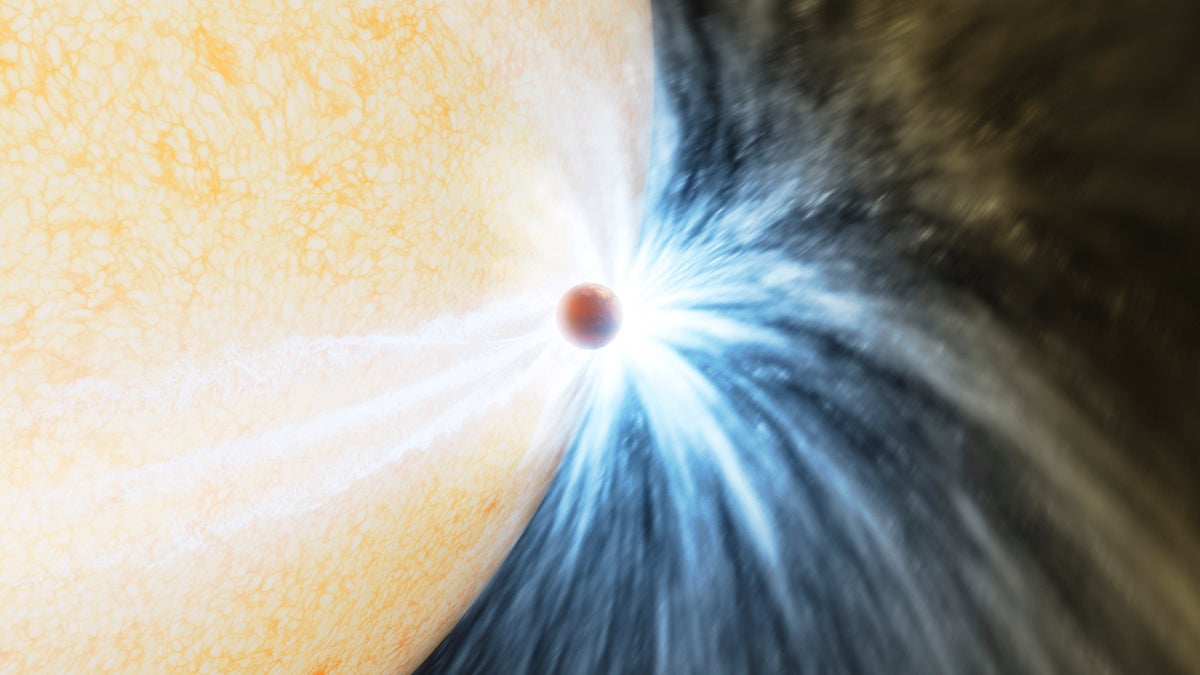
Scientists have watched a planet being eaten by a star for the first time – and it will eventually happen to the Earth.
Researchers have seen stars just before or after they eat entire planets whole. But a new study marks the first time that scientists have watched as it happened.
As they reach the end of their lives, star grow to about a million times their original size, eating up any planets or other objects that might be around them.
The violent event happened in our own galaxy, about 12,000 lightyears away, scientists believe. Astronomers watched as a star grew to be about 100 times brighter over a period of just 10 days – and then faded away.
There was then a cold, longer-lasting signal that arrived at Earth, astronomers said. That was likely the last trace of a planet as it was engulfed by its star.
“We were seeing the end-stage of the swallowing,” said lead author Kishalay De, from MIT.
The star is about 0.8 to 1.5 times the mass of our Sun, and the planet was between one and 10 times the mass of Jupiter, researchers believe. Much of the material that once made up that planet was spat out into the universe, and could eventually go on to form new stars or planets.
Eventually, the Sun and our Earth are expected to suffer the same fate – though not for another 5 billion years. When that happens, the signals would likely be similar.
“We are seeing the future of the Earth,” said Dr De. “If some other civilization was observing us from 10,000 light-years away while the sun was engulfing the Earth, they would see the sun suddenly brighten as it ejects some material, then form dust around it, before settling back to what it was.”
Dr De and other researchers had not been looking for such an incident. Instead, it was stumbled on while searching for signs of stellar binaries, where two stars orbit around each other and occasionally brighten as they tear away bits of each other.
But observations from the Zwicky Transient Facility (ZTF) showed brightening that did not fit with those objects – and appeared to be a star that had rapidly brightened and then faded, all over the course of a week. Follow-up observations then showed that it was something altogether more strange.
Infrared data and observations from other telescopes showed that the star was not only brightening in optical light but also in infrared, which suggests there was dust present. That surge in infrared light began about nine months before the optical flash – and continues even after that had faded.
Those observations led scientists to piece together the story. They found that the data appeared to suggest that the star had puffed up to a much larger size, and that the bright flash had been the traces of the planet being destroyed and flinging dust around as it was.
“This is just spectacular,” said Mansi Kasliwal, professor of astronomy at Caltech and a co-investigator on the ZTF project. “We are still amazed that we caught a star in the act of ingesting its planet, something our own Sun will do to its inner planets.
“Though that’s a long time from now, in five billion years, so we don’t have to worry just yet.”
Having detected the signatures of a planet being eaten means that scientists now have better data for what an incident looks like in other data. It will also help better understand what happens as other planetary systems reach their end – and what will eventually happen to ours.
An article describing the findings, ‘An infrared transient from a star engulfing a planet’, is published in Nature.







